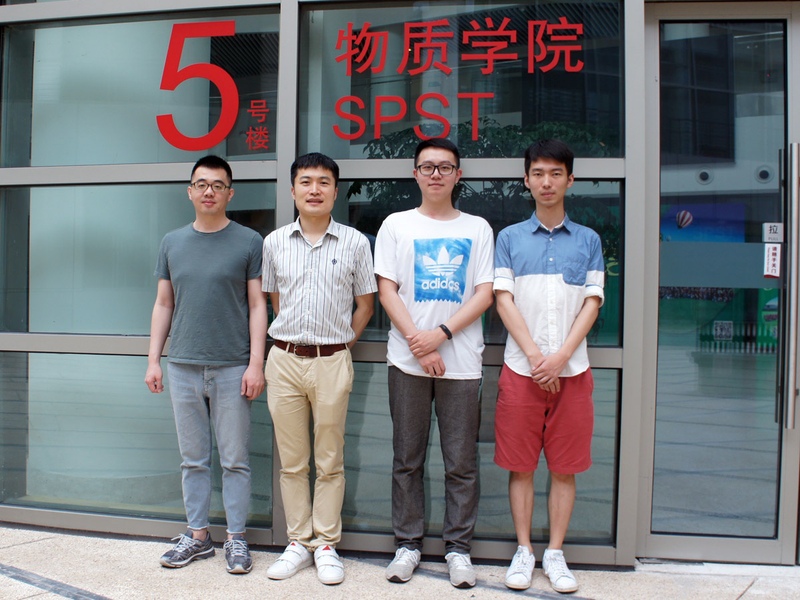In a paper titled “All-Inorganic Perovskite CsSnBr3 as a Thermally Stable, Free-Carrier Semiconductor,” School of Physical Science and Technology (SPST) Professor Mi Qixi’s group studied a new semiconductor material CsSnBr3 (cesium tin bromide). Compared with similar materials, a more favorable crystal structure and electronic band structure enable CsSnBr3 to generate free charge carriers under illumination, and render significantly higher stability toward temperature and moisture. These advantages of CsSnBr3 suggest potential applications in solar cells and photodetectors. Their research has recently been published online in the academic journal Angewandte Chemie International Edition.
A large family of semiconductor materials with a general formula ABX3 and the perovskite-type structure (‘perovskite materials’ in short) have been intensely investigated for their excellent optoelectronic properties. As a particular example, MAPbI3 (methylammonium lead iodide) containing lead and an organic ion has been fabricated into novel solar cells and photodetectors with high efficiency and low cost. However, applications of MAPbI3 are limited by the instability of methylammonium toward temperature and moisture and the toxicity of lead. A promising solution is to substitute lead for tin.
Accordingly, the research group aimed at inorganic, tin-containing perovskite materials, and prepared high-quality samples of thin films and crystals of CsSnBr3. Using various techniques, the authors measured and calculated key properties of CsSnBr3, such as bandgap energy, exciton binding energy, dielectric constant, and effective charge-carrier mass. Notably, experimental and calculated results of bandgap energy and exciton binding energy agree with each other, showing that CsSnBr3 features an exciton binding energy lower than the thermal energy at room temperature. This conclusion suggests that the light-induced electron and hole move freely inside CsSnBr3, ready to be collected and converted to electricity. On the other hand, taking an organic perovskite material as reference, the authors demonstrate that the semiconductivity of CsSnBr3 originates from the tin bromide framework, and the inorganic cesium ion significantly enhanced the material’s stability.
Their research achievement reveals a quantitative relationship between the key semiconductor properties of CsSnBr3 and its framework structure; finding that CsSnBr3 thin films do not decompose easily in air and are more stable than organic perovskite materials; and indicates that the semiconductor characteristics of CsSnBr3 makes this material suitable for tandem solar cells and direct X-ray detectors.
The authors of this paper are Li Binghan (fifth year PhD student, first author), Long Ruiying (second year MSc student), Xia Yu (Class of 2018 undergraduate), and Mi Qixi (assistant professor, corresponding author). ShanghaiTech University is the first responsible institution. This research has been assisted by the research groups of Professors Xue Jiamin, Li Gang, and Ning Zhijun, as well as by Dr. Yu Na of SPST’s Center for Characterization and Analysis. Financial support comes from State Key Research Project, Ministry of Science and Technology, as well as the Shell-CAS Frontier Sciences Program. A patent (CN107059122A) is pending for techniques related to the new material under study.
Link to the publication: https://onlinelibrary.wiley.com/doi/abs/10.1002/anie.201807674

The semiconductor properties (left) and stability (right) of CsSnBr3 (center) are significantly advantageous over other similar materials

Research group (from left): Li Binghan, Prof. Mi Qixi, Long Ruiying, Xia Yu

